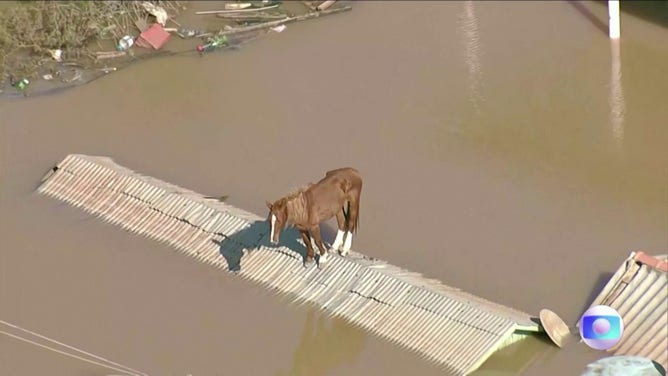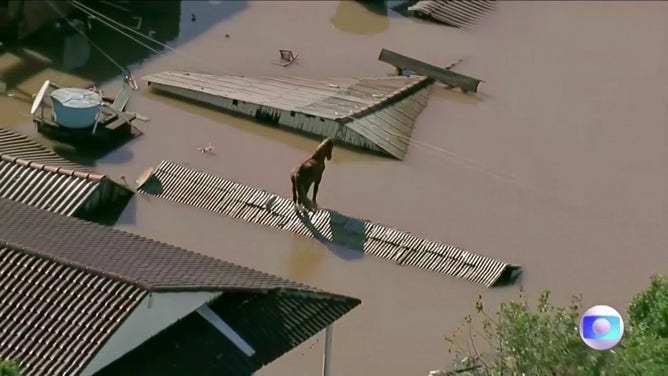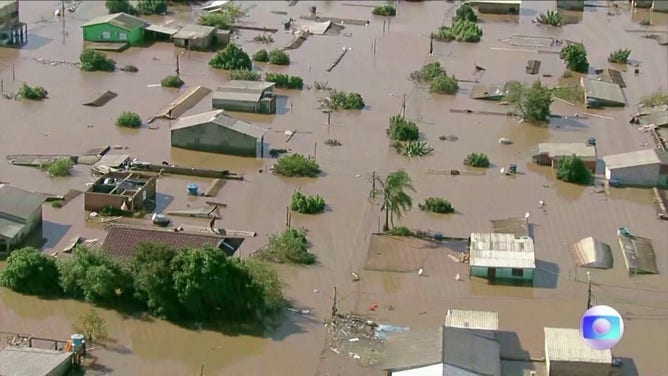Watch: Horse stranded on rooftop by floods in Brazil rescued by firefighters
A Brazilian television station's news helicopter captured aerial views Wednesday of the animal standing atop the building, unable to escape in the city of Canoas.
Trapped horse on rooftop by floods in Brazil rescued by volunteers
Rescuers saved a horse Thursday that had been stuck on a rooftop for two days in a southern Brazilian town which was severely flooded.
CANOAS, Brazil – Rescuers managed to save a horse that had been stranded on a rooftop for two days in a severely flooded Rio Grande do Sul town in southern Brazil.
A Brazilian television station's news helicopter captured aerial views Wednesday of the animal standing atop the building, unable to escape in the city of Canoas.
After images and footage from TV Globo surfaced on social media, the mayor of the city called for a rescue operation. Volunteers later secured the mare and loaded her onto a boat to take it to safety. Local media reports suggest that the horse's owners left the animal behind when they abandoned their flooded property.
SATELLITE IMAGERY SHOWS EXTENSIVE FLOODING IN BRAZIL AS DEATH TOLL REACHES 100
The distressed horse, nicknamed Caramelo due to its brown coat, drew the attention of Felipe Neto, a well-known Brazilian digital influencer.
"Caramelo, Brazil loves you," he exclaimed on X.
First Lady Rosangela da Silva even praised Caramelo's rescue efforts in the aftermath of the country's deadly floods. She specifically applauded the mobilization of volunteers and the Brazilian Army in saving yet another life affected by the disaster.
The state's Civil Defense agency said the death toll in Rio Grande do Sul had risen to 107 lives, with 136 people still missing in inundated towns where streets have turned to rivers, according to Reuters. More than 55,000 have been left homeless.
The storms that hit the region in late April were particularly severe. They brought over 20 inches of rainfall, which caused extensive damage to homes and infrastructure. About 20% of the region remains without water service, and nearly a million are without power. The rain is expected to ease up on Thursday. However, it is likely to continue throughout the weekend.
Meteorologists with Brazil's NIM said El Niño is partially to blame for the wet weather pattern, as the warming waters of the Pacific Ocean help block cold fronts and concentrate areas of instability over the Rio Grande do Sul area.




